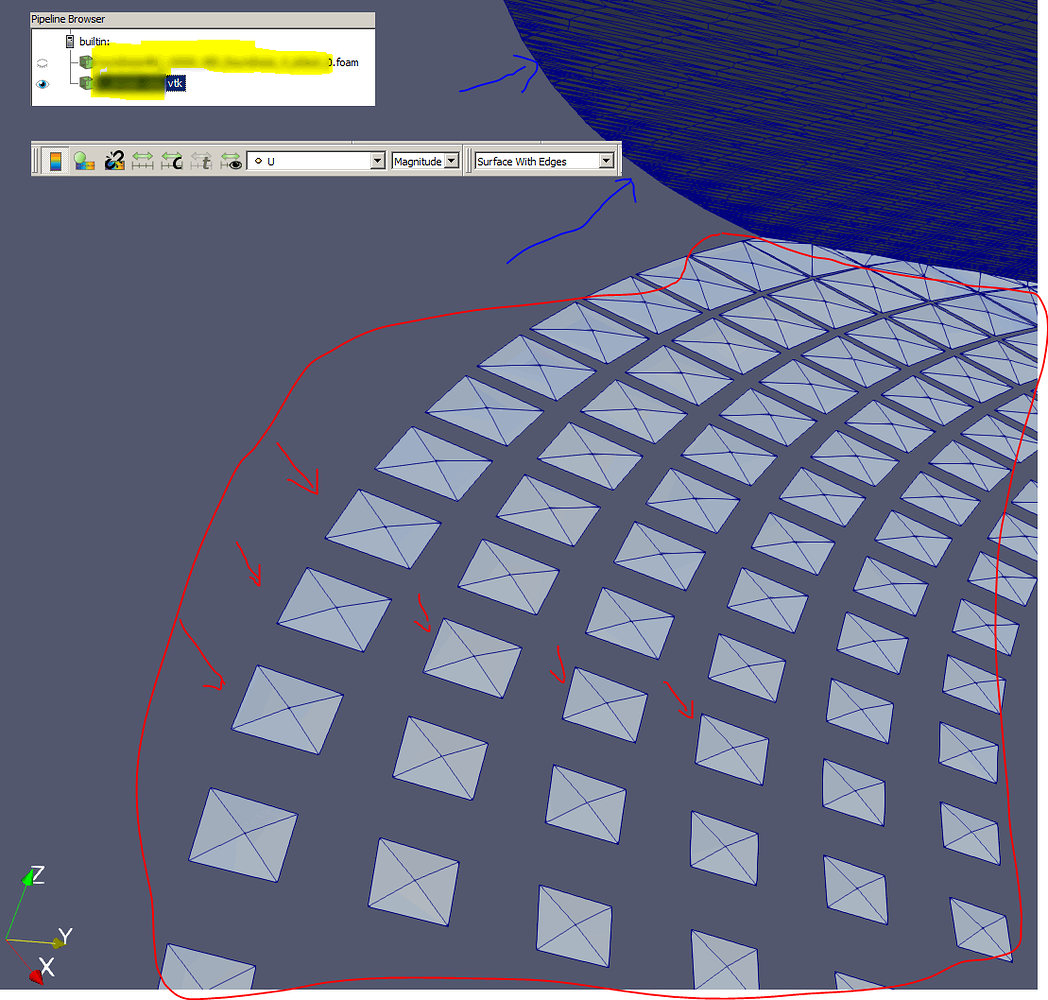

- PARAVIEW VTK TO VTI HOW TO
- PARAVIEW VTK TO VTI INSTALL
- PARAVIEW VTK TO VTI SERIAL
- PARAVIEW VTK TO VTI SOFTWARE
Spacing = np.array(list(reversed(itkimage.GetSpacing()))) Origin = np.array(list(reversed(itkimage.GetOrigin()))) # Read the origin of the ct_scan, will be used to convert the coordinates from world to voxel and vice versa. # Convert the image to a numpy array first and then shuffle the dimensions to get axis in the order z,y,x Print(key + ': ' + file_reader.GetMetaData(key)) DICOM)įor key in file_reader.GetMetaDataKeys(): # Some files have a rich meta-data dictionary (e.g. Print('image size: '.format(file_reader.GetSize(), file_reader.GetSpacing())) # Read image information without reading the bulk data. Print('Usage: ' + _file_ + ' input_sitk_file' + ' output_sitk_file', file=sys.stderr) Print('Wrong number of arguments.', file=sys.stderr) Here's a SimpleITK version with the function load_itk taken from here: import SimpleITK as sitk #w = tvtk.XMLPolyDataWriter(input=mesh, file_name='polydata.vtk')

#mesh.point_data.get_array(4).name = 'Stress' #mesh.point_data.get_array(3).name = 'Force' #mesh.point_data.get_array(1).name = 'Pressure' Mesh = tvtk.PolyData(points=points, polys=poly_edge) #w = tvtk.XMLImageDataWriter(input=i, file_name='spoints3d.vti') Under VTK, these filters are implemented in vtkResampleWithDataSet and vtkResampleToImage. These filters can sample the point and cell data of one dataset on to the points of another dataset.
PARAVIEW VTK TO VTI HOW TO
The image data file is a wavelet source produced in ParaView. Recently, we added two new filters to the Visualization Toolkit (VTK) and ParaView. Do you have example of how to convert dcm to vti file using paraview / vtk SebastienJourdain (Sebastien Jourdain) August 12, 2021, 4:33pm 7 If ParaView works for you, load your file (s) and save it using the vti format.
PARAVIEW VTK TO VTI SERIAL
The advantage it has over evtk, is the support for both ascii and html.Hope it will help other people. ImageData (.vti) Serial vtkImageData (structured). Here is a test example I have written for myself following and tvtk documentation. vtk file ( I converted it with (c3d -o file. but there is a problem exemple : as you see in the picture 1 I couldn’t open the. I installed the ITK-SNAP and 3cd converter. TVTK of Mayavi has a beautiful way of writing vtk files. I am working with MRI Nifti dataset and I would convert it to.

# Writes legacy ".vtk" format if filename ends with "vtk", otherwise Grid.point_data.scalars = np.ravel(order='F') It doesn't use PyEVTK, and it supports a broad range of data sources (more than just structured and unstructured grids), so it will probably work where other things aren't.Īs a quick example (Mayavi's mlab interface can make this much less verbose, especially if you're already using it.): import numpy as npįrom import tvtk, write_data I can open both foo.vtk and foo.obj with paraview but the textures are not there.It's not a direct answer to your question, but if you have tvtk (if you have mayavi, you should have it), you can use it to write your data to vtk format.
PARAVIEW VTK TO VTI SOFTWARE
The Visualization Toolkit (VTK) is an open-source, freely available software system for 3D computer graphics. add_mesh( surface, texture = 'aerial-image') The VTI file is a ParaView VTK XML Image Data. However, my PARAVIEW (version 5.10.1 for Ubuntu) does not seem to support editing the Scale transfer function as explained in the above URL. # This exports the surface as well, but not the texture p = pvqt. How can I draw a particle with an exact diameter As far as I know, using the point Gaussian method is the best way to draw a particle with its correct diameter.
PARAVIEW VTK TO VTI INSTALL
# this saves the surface correctly but not the texture surface. How did you install VTK With Thanks for the response. # add texture to surface dictionary surface. texture_map_to_plane( use_bounds = True, inplace = True) Import pyvista as pv import numpy as np import pyvistaqt as pvqt # I create some dummy data here for the example # domain size nx = 100 ny = 100 # point cloud creation east, north = np.


 0 kommentar(er)
0 kommentar(er)
